Firearms design and technology have evolved over many generations. There are many generations of guns that separate the Colt Paterson from the GLOCK 17. When it comes to pump shotguns, there are basically three generations, with some of the best shotguns ever made sitting in the second one. If you want me to break down why the second generation is the best some time, I will, but for today, we’re talking about the Remington Model 31, which is a member of the second generation of pump shotguns.
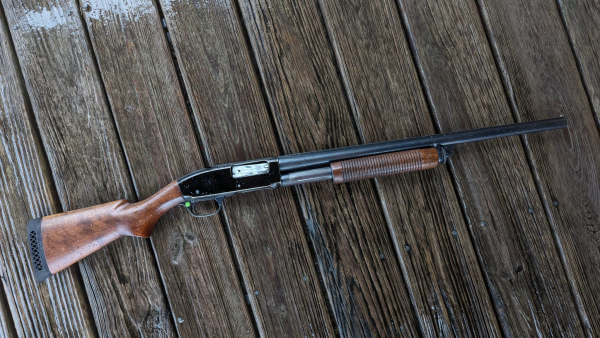
The Model 31 came in 12, 16, and 20 gauge. (Photo: Travis Pike for SNW
There are lots of legends and plenty of highly desirable models in the shotgun world, but for some reason, the Remington Model 31 seems to be largely ignored. I acquired a Remington Model 31 in 20 gauge for a fairly low price and was immediately impressed. I got mine so cheap because someone had cut the barrel down…and it wasn’t done by a reputable gunsmith. I’m lucky they bothered to put a bead back on it.
The Remington Model 31 – A Brief History
Half the time, I buy guns because it will send me down the path of researching old guns, learning a thing or two, and then sharing what I learned. Remington produced the Model 31 to replace the slab-sided Model 17. The Model 31 got rid of the bottom eject design for a side-ejecting system Remington wanted to compete with the king of second-generation shotguns, the Winchester Model 12.
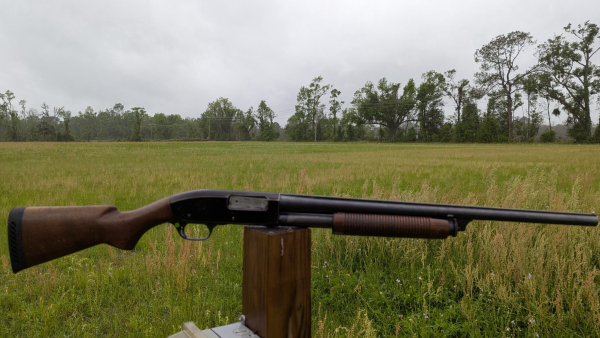
The Model 31 features a nice blued finish and awesome wood furniture. (Photo: Travis Pike for SNW
Remington produced the Model 31 in 12, 16, and 20 gauge variants. The 12-gauge was the most common model, with the 16 and 20 gauge trailing a fair bit. The Model 31 had separate frame sizes for the 12-gauge model, with the 16 and 20-gauge models sharing a frame size. The guns were produced in almost three dozen different grades.
Remington tasked C.C. Loomis, a long-time Remington employee, with designing the gun. O.H. Loomis and C.H. Barnes contributed to the design as well. C.C. worked fast. Development began in January 1930 and Remington rolled Model 31s off the assembly line in August of the next year.

Look at that beautiful wood. (Photo: Travis Pike for SNW
They turned out a well-made, side-ejecting pump shotgun just in time for the Great Depression. Oh, and it was a pricey gun for the day at $48.95. That was almost ten dollars more than the Model 12. As a result, it didn’t see the same legendary success as the Model 12 or even the Ithaca 37.
After the Kansas City Massacre, each FBI office acquired one Model 31 per office and the military purchased several for use in WWII, but these weren’t trench guns. Rather, they were used for aerial gunner training. In fact, only one prototype Model 31 trench gun is known to exist.

The length of pull was quite short. (Photo: Travis Pike for SNW
The Model 31 In Real Life
The Model 31 mayfield not have reached the same peak popularity as the Winchester Model 12, but that doesn’t mean it wasn’t a finely made shotgun. The Model 31 features a rich blued finish and walnut furniture. It’s a beautiful gun with that old-world craftsmanship that’s a core part of the second-generation pump shotgun world.
The action impressed the hell out of me. The Winchester Model 12 is probably the perfect repeater, but the Model 31 has the ball-bearing pump. If you hit the pump release and hold the gun pointing upward, the action will glide to the rear, unpropelled by your hand.
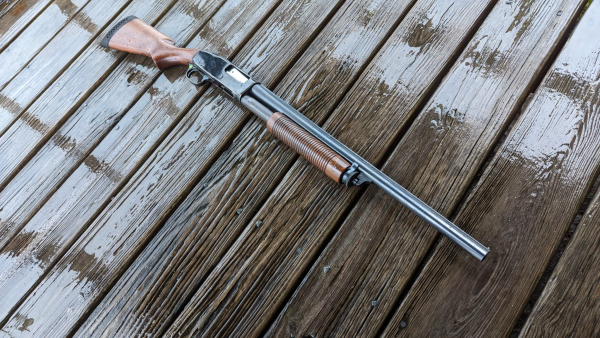
This gun has the slicked pump I’ve ever felt. (Photo: Travis Pike for SNW
It’s just crazy-smooth. Pumping this thing is a tactile joy. It moves gracefully to the rear and can be pushed and pressed back and forth lightning fast. The wood furniture feels fantastic with the scalloped forend and beautiful wood stock. It even has that old gun smell that I absolutely adore.
The Model 31 in 20 gauge is super-light and handy. That trimmed barrel makes it even handier, but it doesn’t translate well into tight patterns. The barrel is marked full choke, but thanks to that chop job, this thing isn’t delivering full choke performance. I won’t judge other Model 31 patterns by how this gun patterns. Let’s say it’s a buckshot-only gun.
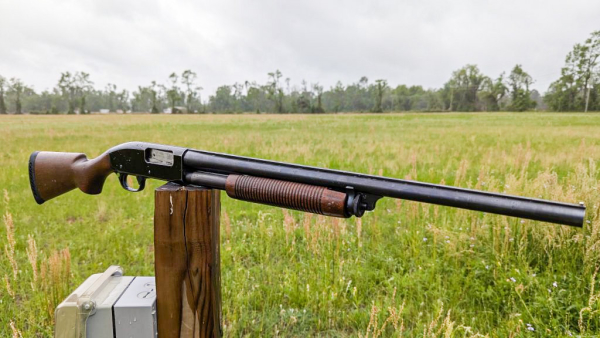
The barrel on mine was chopped. (Photo: Travis Pike for SNW
It would be fine with buckshot for home defense, but this is no longer a bird gun. Shooting a 20-gauge is always a joy, and the light recoil makes the gun quite charming. The gentle kick mixed with the slick action makes shooting this gun smile-inducing.
Getting a 31
The Model 31 seems fairly rare these days. There’s one on Gunbroker as I write this priced at about a grand. Guns.com has two for under $500 each. That’s all I could find. I spent $200-ish on mine, likely due to that crudely cut barrel. It’s well worth that to me, and I was shocked by how nice the Model 31 handles.
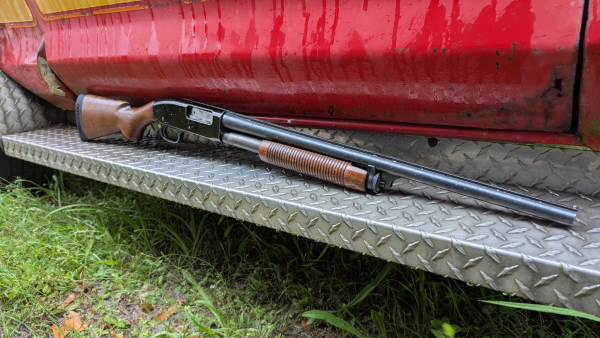
The Model 31 works brilliantly and I could see why it allowed Remington to succeed. (Photo: Travis Pike for SNW
The Model 31 was quickly overshadowed by the Remington 870 that replaced it in 1950 and is mostly forgotten in the modern era. Now that I have a Model 10 and Model 31, I need a Model 17 to complete my collection, so I’ll keep my eyes open.
– Travis Pike, Shooting News Weekly